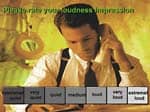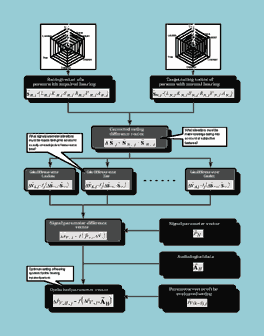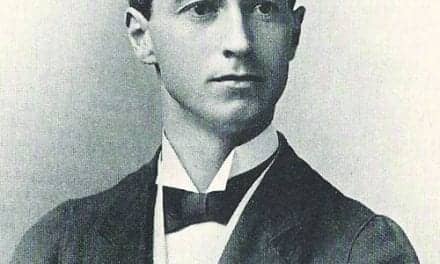The debate is long over. The profession of audiology has become a doctoral-degree profession. In the short span of three years, distance-learning AuD programs have graduated hundreds of new doctors of audiology. It is estimated that, by the fall of 2002, one-fourth of all audiologists in the U.S. will be doctors of audiology. By the fall of 2004, the estimate climbs to one-third.1 Distance-learning programs continue to report significant increases in applications and matriculation.2,3
Those first waves of distance-learning AuDs have begun to proclaim the virtues and benefits of their respective programs and the difference that the doctorate has meant to them in their professional and personal lives. This author has had the pleasure of being a faculty and guest instructor for four of the distance-learning programs, and the experience has been rewarding. It has also been challenging as the schools—students and faculty alike— have learned how to deliver distance education through relatively new web-based technologies.
The purpose of this article is to share with readers, from an instructor’s perspective, experiences in the development, preparation and ongoing involvement in distance AuD education for current practitioners. It is my hope that those audiologists contemplating enrollment in an AuD program will be encouraged to pursue the degree.

Student Demographics
Audiologists participating in distance- learning programs range from those employed in well-established, nationally recognized multi-office private practices, to smaller independent private practices, to government and military audiologists and those who are employed by physicians and hospitals. There is also an increasing awareness of the benefit of obtaining this advanced clinical degree by audiologists who work for manufacturers.
The working audiologists in these programs hail from a broad range of specialties, from cochlear implants to hearing instrument dispensing, and from medical and diagnostic audiology to vestibular audiology. It is this wealth of diversity, experience, work settings and clinical specializations that helps create a rich learning environment, as the distance-learning student works in a collegial network through the school’s website and Internet connections. Students from across the U.S. and Canada, as well as other countries, network via these courses and share their clinical expertise and advice on a regular basis.
Curriculum and Course Content
The distance-learning programs have varying philosophies regarding curriculum and course work. Some programs have fixed curricula that all students follow, while other programs evaluate individual student needs through an Evaluation of Practicing Audiologists Capabilities (EPAC). The latter programs allow the students, along with the dean of the program, to customize and design a curriculum that best fits their individual needs. The goal is to strengthen the subject areas that are less familiar to the student. The fixed curriculum approach has the benefit of providing a level playing field and ensures that all graduates of the program have a common knowledge base.
Course Work, Assignments and Assessments
Online courses take a great deal of preparation. Each course may range from six to eight weeks, and all of the instructional materials, assignments and exams need to be in place prior to the start of the semester. Unlike traditional classroom teaching, where it is possible to prepare a few hours or days prior to a lecture, all of the material must be online well in advance. Using units of study, the students are able to progress through each week’s assignments, but are able to look ahead in the course and even do their reading or preparation in advance. Assignments may be in a variety of forms, such as web searches, reviews of associated sites on different subjects, readings in textbooks or the latest journal articles, and practical application exercises. Assessments or exams may be taken online. The capability for automated scoring, which allows quick posting of grades, seems to be a favorite of the AuD distance-learning student who is already a successful and motivated professional. There is little tolerance for neglect by an instructor.
Chat Power
The use of weekly chats to supplement the online materials is highly effective in ensuring that the week’s assignment has been understood by the students, as well as in answering any unresolved questions. The chats are scheduled in the evenings to accommodate work and home lifestyle schedules.
This author has used a combined format of lectures and an “Open Discussion” with “Question-and-Answer” format to answer any questions. This provides a common dialogue regarding clinical applications or the students’ own patients seen in their respective clinics. The chats are an invaluable learning tool that not only provide direct access to the instructor, but to their fellow students as well. It is not uncommon during the final chat of a course for the students to express regret that it is their final evening together.
Life-Long Learning
As with many other professions, the discipline of audiology recognizes the importance of life-long learning. Technology and new trends in the diagnosis and treatment of hearing and balance disorders—as well as the constant flow of new information—demand that clinicians stay abreast of the newest and latest information. Many of the distance-learning AuD programs are uniquely positioned to provide easily accessible and cost-effective continuing education opportunities for the profession. New technologies such as streaming video and media players are providing advances that allow virtually any diagnostic or treatment protocol to be delivered to a clinic or audiologist anywhere in the world upon demand. The days of “brick and mortar” are over; virtually every major graduate school is now offering advanced degrees and certification programs through distance learning.
The AuD Student as a Consumer of Information
Although there may not be a “typical” AuD distance-learning student, these students do share at least one common denominator: they are working professionals who are able to shop for the best education at the best price. This is far different from the typical undergraduate or even graduate student in most speech and hearing departments.
The AuD student is not only interested in purchasing the best education, but will also demand quality and value. This is evident in their competitive spirit as they defend their exam scores and in their tenacity in completing their assignments. The transitional AuD student appears to appreciate and value his/her education to a greater extent than this author has ever experienced when teaching traditional undergraduate and graduate students.
Teaching in these classes is an extremely rewarding process, as online students are unrelenting in their pursuit of information. The student with a wealth of experience and knowledge is not hesitant to challenge any information contrary to what they have experienced in their own clinical settings.
This is to the great benefit of the instructor who can assess and use this information. Teaching materials and assignments must be relevant, accurate and clinically applicable. Outdated information will not be tolerated by these experienced students. In many ways, these students have the potential to transform the university setting into teaching centers that offer both the traditional scientific background along
with constantly updated information (and feedback) on the applied clinical aspects of audiology.
Transitioning the Profession
There are nearly 9000 audiologists practicing in the United States. As a rule, audiologists seeking to transition to the AuD degree wish to do so as quickly, as affordably and as unobtrusively as possible. The concept of forcing this mass of audiologists to leave their careers and families to attend a residential type of program is impractical and unacceptable to most audiologists. Likewise, our graduate-level training, because of the proliferation of programs, did not always provide a rich clinical experience for the master’s-level audiology student. It is not uncommon for audiologists to reminisce about an electrophysiology course in which they had to go to an off-site facility to observe an ABR or ENG, only to find that the equipment was broken. That experience may have been the extent of their clinical experience with electrophysiology. To now ask these same professionals to return to a campus which may have a similar situation is unacceptable.
Real-World Application
An expanded scientific and clinical knowledge base provides new skills and clinical protocols for use in the AuD distance learner’s practice.
AuD students often begin to apply these newly acquired skills in their own practice almost immediately. Many students request additional references, resources and materials once they become enthusiastic about a topic, and they soon see the fruits of their studies in their own practice or clinical setting.
Summary
Although these past few years have seen hundreds of AuD distance-learning graduates, there are thousands of master’s-level audiologists who will follow. For those audiologists who may be on the sidelines waiting for a signal, simply ask any transition/distance-learning AuD his/her opinion. Author’s Note: The AAA website (www.audiology.org) has a listing of and direct links to the various programs available. w
References
1. Ault D: AuD Update: Stats and Facts. Audiology Online article (www.audiologyonline.com), May 30, 2000.
2. Osborne G: Personal communication, 2001.
3. Parent-Buck T: Personal communication, 2001.

Correspondence can be addressed to HR or Richard E. Gans, PhD, American Institute of Balance, 11290 Park Blvd., Seminole, FL 33772; email: [email protected] ; website: www.dizzy.com.





